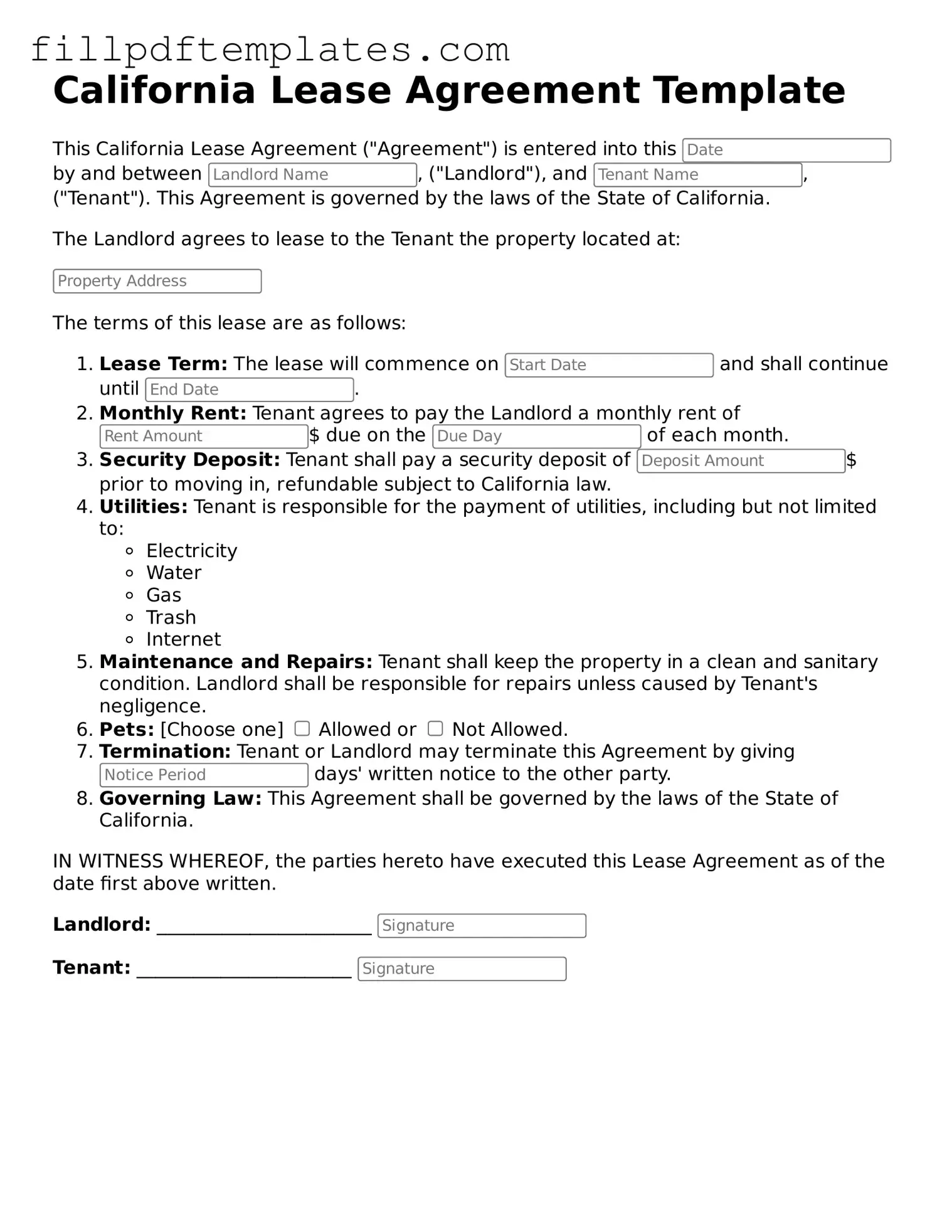Blank California Lease Agreement Form
A California Lease Agreement form is a legal document that outlines the terms and conditions between a landlord and tenant for renting a residential property. This form serves to protect the rights of both parties and ensures clarity in their relationship. To get started, fill out the form by clicking the button below.
Get Form
